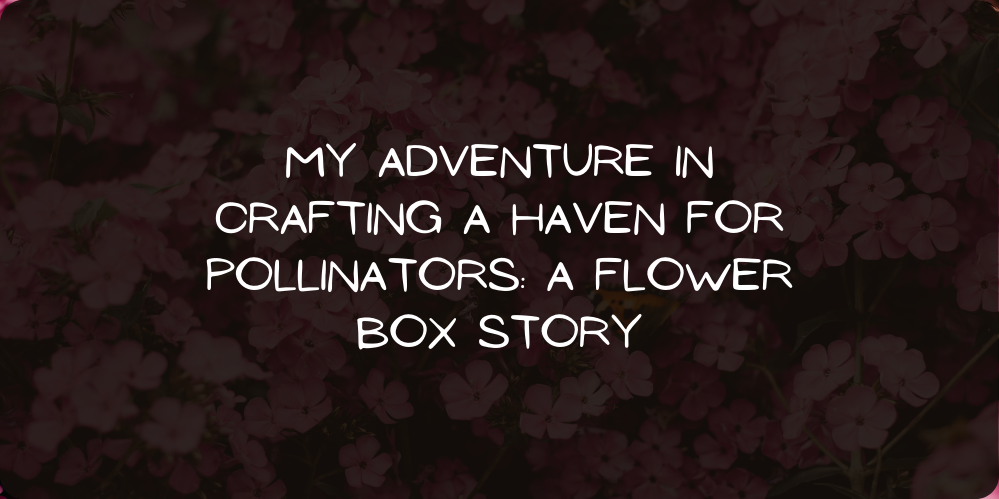Spreading Aroma To All Over The UAE

09
Jun
Hello, dear friends and nature enthusiasts!
Today, I am thrilled to share my journey into the heart of nature's beautiful co-dependency – the creation of a pollinator-friendly flower box. This adventure was embarked upon, not just for its aesthetic value but to play my small part in supporting the precious pollinators – bees, butterflies, hummingbirds, and other beneficial insects. These tireless workers are crucial to our ecosystem, and creating spaces that support them is one of the most rewarding pursuits for any gardening enthusiast.
As much as 75% of the world's flowering plants and about 35% of the world's food crops depend on animal pollinators to reproduce. Unfortunately, the recent years have seen a decline in their populations. This reduction is a consequence of various factors including habitat loss, pesticide exposure, and climate change. By creating a pollinator-friendly garden, we contribute to their conservation and support the health of our ecosystems.
My flower box, which sits gloriously on my balcony, is teeming with life. It offers a feast of nectar and pollen for our busy little friends. To make this oasis, I carefully selected a variety of plants that would provide a constant food source from early spring to late fall. Let's have a look at my plant choice:
1. Salvia: A magnet for bees and butterflies, this perennial blooms throughout the summer and its vibrant flowers add a pop of color.
2. Lavender: Aside from its soothing aroma, lavender is beloved by bees and butterflies. It's silvery foliage and beautiful purple blooms are a sight to behold.
3. Cosmos: These delightful, daisy-like flowers are easy to grow and provide nectar for a variety of pollinators.
4. Marigolds: Marigolds attract butterflies, bees, ladybugs, and other beneficial insects. Their bright yellow and orange blooms make the garden look lively.
5. Mint: A great addition to any pollinator garden, mint's small clusters of flowers are adored by bees. A bonus: you can also use the leaves for your culinary exploits!
6. Zinnias: Butterflies love zinnias. They come in many bright, beautiful colors and bloom heavily, which provides ample nectar.
Remember, it's not just about the choice of plants but also about maintaining them organically. Avoid the use of synthetic pesticides, fungicides, or fertilizers. They can be harmful to both pollinators and the plants.
Checkout our products
Seeing the flower box buzzing with life is a reward in itself. The myriad of colors from the flowers and the fluttering butterflies, the hum of bees, and the sight of hummingbirds is a spectacle that brings joy, tranquility, and a sense of being one with nature.
Moreover, the pollinator-friendly flower box has improved the productivity of my nearby kitchen garden. I've noticed an increase in the yield of my vegetable plants, particularly the ones that rely on pollinators like tomatoes, peppers, and squash.
Creating a pollinator-friendly garden is a small step toward a greater journey - the journey to keep the chain of life thriving. Each one of us can make a difference, and every pollinator garden, no matter how small, counts.
I hope my journey inspires you to create your own little pollinator paradise. Remember, gardening is not just about the destination, but the joy of the journey. I look forward to hearing about your own gardening adventures!
Until next time, keep those green thumbs working!